How to Get from Haifa to Tel Aviv
If you’re visiting Israel, whether it’s for the first time or the tenth, the chances are you aren’t going to want to stay in one place. And why should you? Israel has it all - beaches, archaeological sites, wineries, places of worship, nature trails, mountains, deserts and so much more besides.

View of Bahai Gardens, Haifa. Photo credit: © Shutterstock
To give you an idea of the size of Israel, it’s about equivalent to the US state of New Jersey or half the size of Switzerland. Its total area is 22.145 square km (8.630 square miles) of which 21. 671 km is land. Israel is bordered by Lebanon to the north, Egypt to the southwest, Syria to the northeast, Jordan to the east, and the Mediterranean Sea to the west.
And something else that’s really great about travel in Israel is that the country has a highly developed infrastructure - highways and public transportation in Israel are both modern and efficient, making it easy to move around - and reach one end of the country from the other - quickly and with not too much effort. This means that even if you’re just in the country for a few days, you can see several areas without wasting too much of your precious time.
In this article, we’ll be looking at how to get from Haifa to Tel Aviv. Haifa is the ‘capital’ of the north of the country and a real Mediterranean city, perched on the slopes of the lovely Mount Carmel. Historically a port city, and today very mixed (Jews and Arabs continue to live and work together here) it’s a lovely place to visit or even spend a few days.
Within the city itself there is lots to explore - the Wadi Nisnas neighborhood, with its bustling market and small alleys, the German Colony (home to the German Templar movement, over a century ago) and, of course, the world-famous Bahai Gardens (affording spectacular views of the city), with its perfectly manicured lawns and shimmering gold dome.

Haifa Maritime Museum, Israel. Photo credit: © Dmitry Mishin
Outside Haifa, less than an hour’s drive from the city you can find nature reserves, the Crusader City of Acre, the Herodian ruins of Caesarea, Druze villages, charming vineyards, rustic zimmers (upmarket ‘cabin style’ accommodation, usually in pastoral settings), Nazareth (where Jesus spent many of his early years) and the Sea of Galilee. And if you want to head as far north as possible, there’s also Rosh Hanikra, with its spectacular caves, close to quiet and pristine beaches.
Of course, we haven’t yet mentioned Tel Aviv - Israel’s largest and most lively city, in the heart of the country, close to Ben Gurion airport and also situated on the shores of the Mediterranean. Just 92 km (50 miles) separates the two cities, so traveling between the two is really very easy - whether you want to go for a few hours, make a day of it or take a mini-break in the ‘White City’ giving you time to explore its cafes, boutiques, Bauhaus architecture, and excellent restaurants.
Below, we’d like to give you some detailed information on the different ways to make the journey - taking the bus from Haifa to Tel Aviv, catching a train, a private or shared taxi, using a private transfer, opting for a shore excursion from your cruise ship or simply renting a car. This will give you a better idea of how to plan, for when you arrive in Israel and start planning your trip around the country. The distance from Tel Aviv to Haifa is approximately 94 km.

The Bahai Temple in Haifa. Photo credit: © Dmitry Mishin
1. Getting from Haifa to Tel Aviv by Bus
Israel’s bus service is modern, comfortable, inexpensive, and reasonably efficient. Traveling from Haifa to Tel Aviv by bus is a popular option since buses leave regularly. If there is no traffic on the road, the journey should take between 1 hour 15 minutes and 1 hour 30 minutes, and a one-way ticket costs 24 NIS (approx. $7.50).
Haifa Bus Stations
There are two different bus stations at which you can catch an Egged bus (Israel’s national bus line) including Haifa Merkazit Hamifrats/Inter-City Platform and Hof HaKarmel station. HaMifratz central bus station is the main bus station of the Haifa Bay district. It is next to Haifa's central railway station (see below under the ‘train’ section) and also the Lev HaMifratz shopping mall.
Egged bus 910 leaves Haifa Merkazit Hamifrats/Inter-City Platform bus station from Floor 3, every 20 minutes and runs directly to Tel Aviv Central bus station. It takes between 60-90 minutes and a one-way ticket costs 21 NIS (6,5 USD). You can pay the driver in cash when boarding or use your Rav Kav Card.
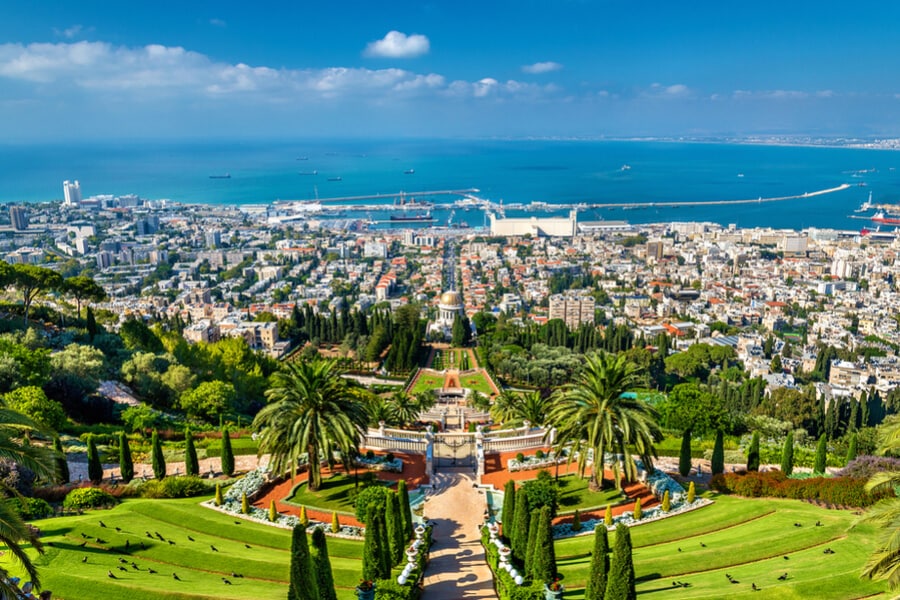
View of Haifa Bay from the top terrace of Bahai Gardens. Photo credit: © Shutterstock
It will drop you directly at the Tel Aviv Central Bus Station (see below). It is also possible to alight on the Namir Road, at the Arlozorov (Savidor) bus station, if you are heading to the north (rather than south or central) Tel Aviv. Buses can also drop you further down, at the Azrieli Centre (ideal for connections with the HaShalom railway station).
The green Rav Kav cards are used widely in Israel - they can be purchased either at bus and train stations or stores and pharmacies in cities and towns. It is possible either to pre-pay specific amounts (with cash or credit cards) or purchase daily/monthly passes. For more information, take a look at the official Rav Kav website.
From Hof HaKarmel, bus number 910 can also be caught. Also known as the Carmel Beach bus station, it opened in 2003. Passengers are entitled to receive a free transfer to urban buses when they buy their intercity ticket to continue from one central bus station to the other one, or into the city.
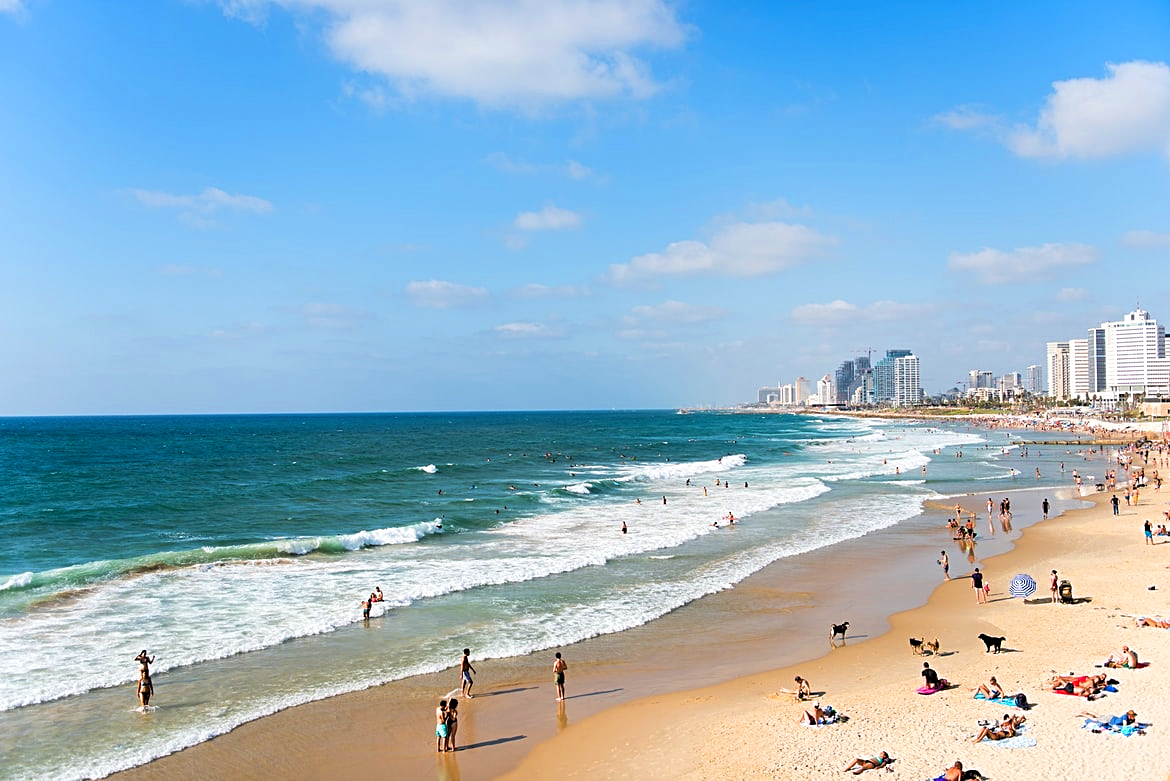
Banana Beach, Tel Aviv. Photo by Daniel Klein on Unsplash
Tel Aviv Bus Stations
Tel Aviv’s Central Bus Station is located in the south of the city on Levinsky Street. The 910 bus alights at the seventh floor and from there it is possible either to take a private taxi, a yellow van shared taxi / monit sherut (see below) or Dan local buses to your destination. The Levinsky bus station is a gateway to cities around Israel, and also operates buses that run every two hours down to Eilat, for those wishing to connect on for their trip to Petra, Jordan.
Tel Aviv’s second bus station is in the north of the city, on the corner of the Namir Road and Arlozorov streets, next to the Savidor Railway Station. It is close to the Ramat Gan Bourse, as well as a half an hour walk to the beachfront. Many local buses run from this station around the city, as well as out to Ramat Aviv and the university, as well as intercity buses onto Jerusalem and Beer Sheva.
2. Getting from Haifa to Tel Aviv by Train
Taking the train from Haifa to Tel Aviv is highly recommended. It’s a fast, frequent and very efficient way to travel and trains leave every 20 to 30 minutes, making it easy to change your plans at the last minute. And because, on Israel Railways, you can buy a ticket at the last minute and it won’t cost you any more than if you book it in advance, you don’t even have to worry if you’re delayed - simply take the next train!
The journey from Haifa to Tel Aviv takes approximately 1 hour 4 minutes on the fastest train, which runs directly between the two cities. There are also slower trains, which take up to 1 hour and 26 minutes. A one-way ticket costs 31 NIS (approx $9.50) and trains run from 5.25 am to 11.35 pm. A train is also an excellent option if you’re time conscious since you won’t have to factor in traffic jams and tailbacks which, unfortunately, are very common on the main highway during commuter hours.
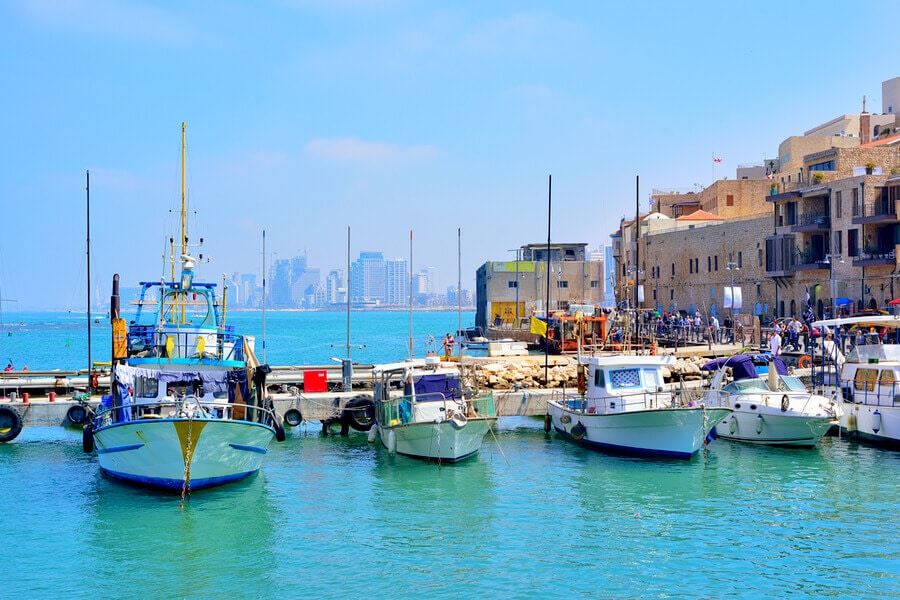
Yachts in Jaffa Port. Photo credit: © Shutterstock
Haifa Train Stations
There are three train stations from which you can begin your journey from Haifa to Tel Aviv - Center HaShmona, Bat Galim, and Hof HaKarmel. HaShmona is the largest of the three and is located on Independence Road, at Plumer Square. The station opened in 1937 and was built by the British (under the Mandate) and has a Bauhaus design.
Bat Galim was Haifa’s primary train station from 1975 until the early 2000s. If you are staying close to the port or coming from Rambam - the city hospital - this station is within walking distance. Hof HaKarmel situated on Sakharov Street is the city’s busiest train station. It is conveniently located next to the Carmel Beach central bus station and walking distance from the MATAM high-tech park.
Payment can be made by buying a ticket from the cashier's office, by booking through the Israel Railways website, using a green Rav Kav card loaded with pre-paid credit (which can be purchased from any station and many pharmacies and stores in Israel), or the Rav Kav mobile telephone app.
Please note, much like the bus services, there are no trains in Israel on the Jewish sabbath. From two hours before Shabbat commences (Friday afternoon) and an hour after Shabbat ends (Saturday evening) public transport in Israel does not run.

Israeli train. Photo by John Adeoye on Unsplash
Tel Aviv Train Stations
Savidor (Arlozorov) - this is located at the intersection of Namir Road and Arlozorov street and is next to the bus station, providing quick access to local buses. From here, it's a quick journey to Tel Aviv University and north Tel Aviv. HaShalom is the train station closest to the Azriel Towers and many large offices in the city center. HaHaganah train station is Tel Aviv’s most southern railway station and is located about 400 meters from the Tel Aviv Central Bus Station (Tachana Merkazit).
3. Getting from Haifa to Tel Aviv by Private Taxi / Shared Taxi (Monit Sherut)
Taxis in Israel are easy to come by - you can either hail them in the street, use one of the many operators in Haifa or Tel Aviv (ask your hotel concierge or check online) or book a taxi from Haifa to Tel Aviv directly through an app such as Gett. You should look to pay somewhere between 700-900 NIS ($215 to $280) for the drive.
Another useful service in Israel is the monit sherut from Haifa to Tel Aviv (in Hebrew this means ‘ shared taxi’). These little yellow vans are operated privately and seat 10 passengers. They run between cities and you simply get in and pay the driver. The only ‘catch’ is that they don’t leave until the van is full, so if you’re the first one in you might have to wait a few minutes.
The upside to the monit sheruts is that because they are not state-operated, they operate on the Jewish sabbath. They are an excellent option for those who wish to travel late Friday or on Saturday. Sheruts in Haifa can be found in HaNevi’im street in the Hadar neighborhood and run to Tel Aviv’s Levinsky Station. Expect to pay a few shekels more than you would for a bus ticket.
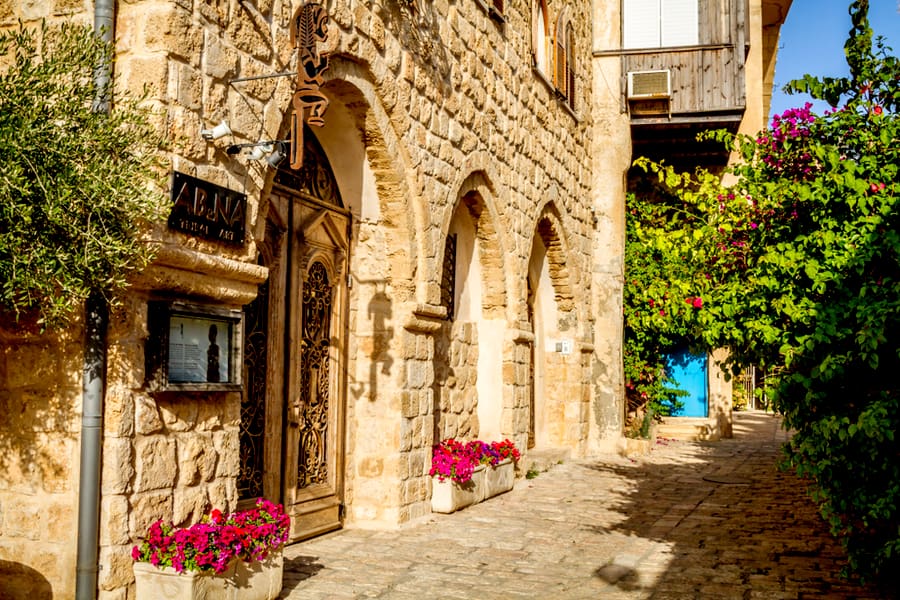
Cozy streets of Old Jaffa. Photo credit: © Shutterstock
4. Getting from Haifa to Tel Aviv with a Private Transfer
Private transfers are a comfortable way to travel between cities and in Israel they are easy to arrange. However, we do advise that you book them through a trustworthy tour operator - this means you’re likely to get a fair price and an honest driver.
Once you have been given the price and are comfortable with it, your credit card will be charged and everything afterwards will be taken care of, meaning you won’t have to deal with any aspect of the journey. At Bein Harim, we are always happy to help with private transfers in Israel - please call us or send us your details on our ‘Contact Us’ form and we will get back to you promptly, with a competitive offer.
5. Israel Shore Excursions from Haifa Port
Haifa is a famous port and, as the years have passed, has become an increasingly popular destination for a cruise. So if your ship is stopping in northern Israel for the day, making a trip to Tel Aviv is a fantastic idea. With shore excursions from Haifa Port, the moment you disembark, you will be met by a private guide and set off quickly for Tel Aviv. Just over an hour later, traffic permitting, you’ll be at your destination, giving you several hours to explore this buzzy, cosmopolitan city.
Take a stroll along Rothschild Boulevard and admire the Bauhaus architecture, wander the streets of the charming Neve Tzedek neighborhood, book a tour to the Jaffa flea market or simply stroll along the boardwalk and enjoy lunch at one of the many fantastic restaurants in the city. With a ship-to-shore excursion from Haifa to Tel Aviv, you can really make the most of your free day and, rest assured, we’ll get you back up north in plenty of time before your scheduled departure.
Lifeguard Station, Tel Aviv. Photo credit: © Shutterstock
6. Getting from Haifa to Tel Aviv with a Rental car
Renting a car in Israel is an excellent way to see the country, leaving you in control of when and where you travel. It is not incredibly expensive to rent a car (indeed, prices are quite competitive) and the freedom it gives you is unparalleled - you can travel before dawn breaks, on Shabbat, and to the tiniest villages in the Galilee and Negev desert that public transport won’t get you to.
Parking in Tel Aviv, however, can be an enormous headache so if you are planning on driving from Haifa to Tel Aviv, think about either paying to leave the car in a lot (although it won’t be cheap). Alternatively, there is some free parking up at Reading, in the north of the city, near to the Tel Aviv Port and you can then take a bus, electric scooter, taxi, or even bike into the city.
Driving from Haifa to Tel Aviv, via route 90 (Yitzhak Rabin Highway) will take anywhere from an hour to an hour and a half (depending on how much traffic you encounter and how fast you drive!) Popular rental hire companies in Israel include Shlomo Sixt, Hertz, Eldan, Thrifty, and, on average, renting a car costs around 260 NIS (80 USD) per day. All of the representatives will speak good English and their hubs are accessible. Take a look beforehand online - if you shop around, there are some great deals to be had.
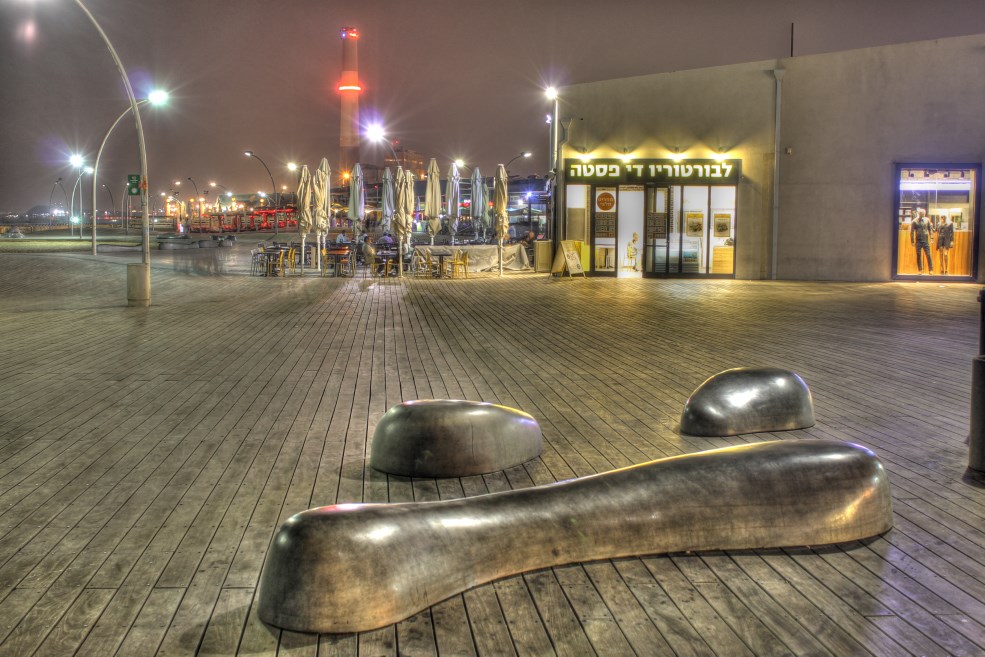
Namal (Tel Aviv Port), Israel. Photo credit: © Shutterstock
 Login / Register
Login / Register
 Contact Us
Contact Us
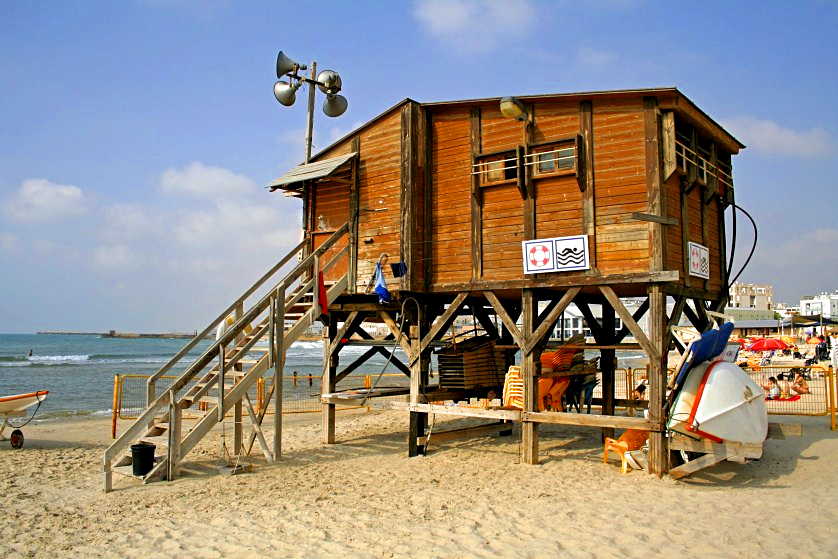
 Certificate of Excellence
Certificate of Excellence Guaranteed Departure
Guaranteed Departure Low Prices Guaranteed
Low Prices Guaranteed 24/7 Support
24/7 Support




